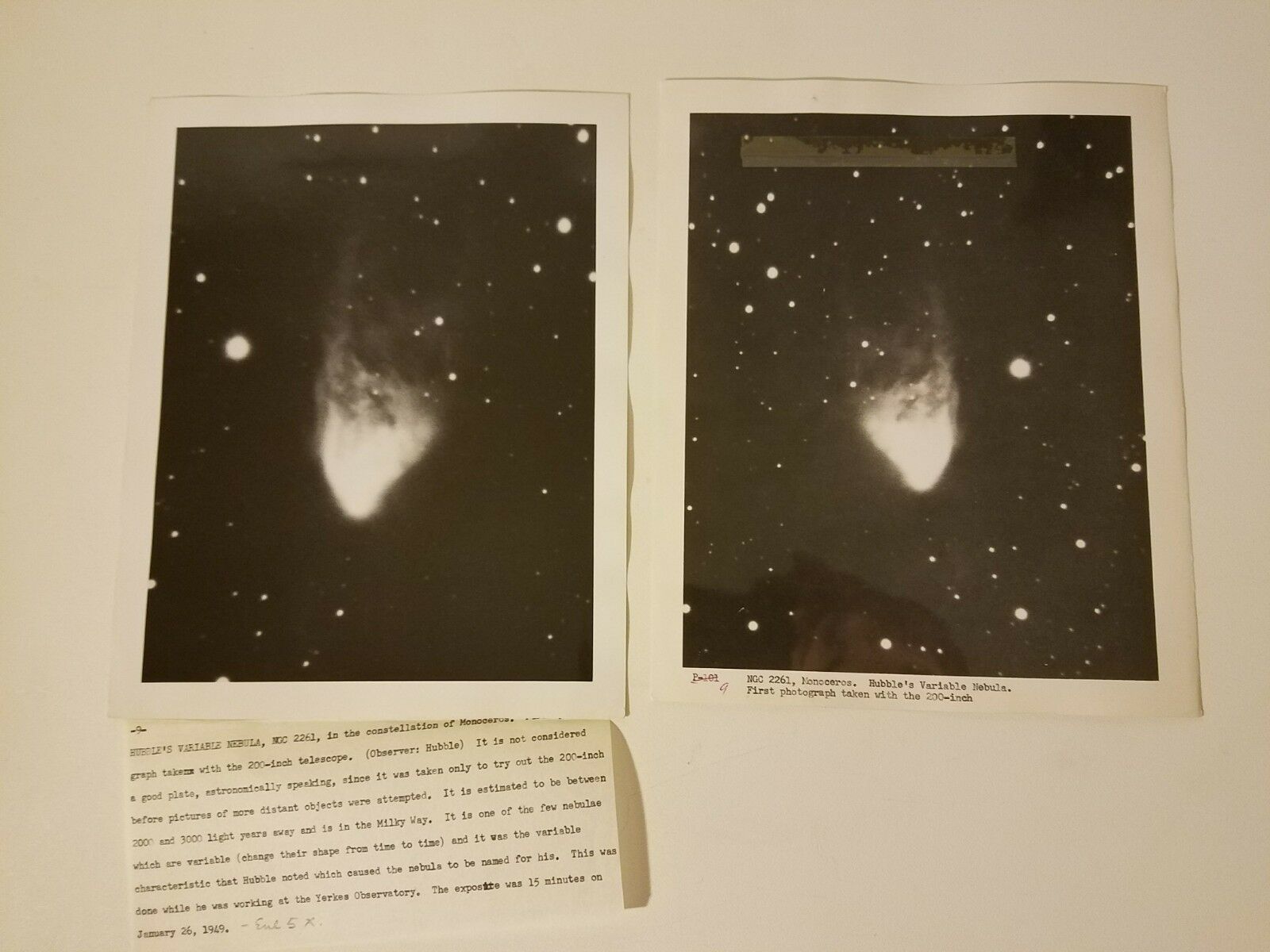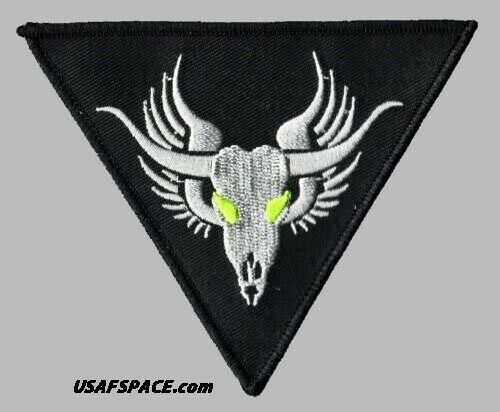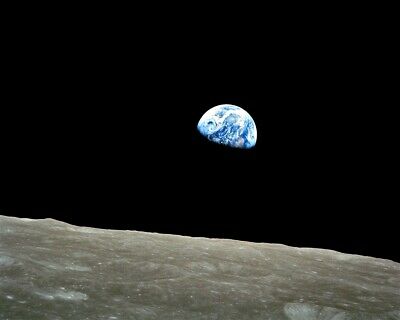-40%
1949 RARE ! NGC 2261 1ST PHOTO PALOMAR 200 IN TELESCOPE MT WILSON CALTECH HUBBLE
$ 1029.59
- Description
- Size Guide
Description
[ASTRONOMY, EDWIN HUBBLE, CALTECH, PALOMAR OBSERVATORY]HUBBLE, Edwin (astro-photographer)
"NGC 2261 - Monoceros"
Offered here is a fantastic and rare pair of 8 x 10 inch images of the same subject. Shown here are two
ORIGINAL IMAGES OF NGC 2261 WHICH WERE
THE FIRST IMAGES TAKEN ON THE 200 INCH HALE TELESCOPE AT THE PALOMAR OBSERVATORY
.
On January 26, 1949 Edwin Hubble took photos of the then notable NGC 2261. Although the photos weren't of the highest quality, they did observe an important astronomical object on the occasion of the '
First Light
' for the new astronomical hardware. After Hubble captured the image, prints were made and ostensibly the first of these were given to the Caltech / Palomar news director, Robert G. Fiedler for dissemination to the various news services. Among Fiedler's collection were these two images of NGC 2261. What we believe to be the 'First' image (of the two) has a 'typewriter typed' caption at the lower edge indicating the New General Catalog number (2261) and the note that it was the '
first photograph taken with the 200-inch
'. Additionally, it has a correction to the internal file / categorization number with 'P-101' (for Palomar 101) which was then changed to #9.
The Second image which is reversed and magnified somewhat compared to the first image has an '
Please Credit - Mt. Wilson - Palomar Observatories
' ink stamp in addition to a printed caption indicating the new file number 9. This second iteration has a more lengthy typed description on onionskin typing paper and glued to the rear of the photo.
Fiedler was friendly with Hubble and even had an offprint copy of Hubble's famous '
A Relation Between Distance and Radial Velocity among Extra-Galactic Nebulae
' paper inscribed to him. (that copy now with a well known Danish dealer priced at 5K). Hubble and Fiedler both fancied smoking pipes and Fiedler would make inquiries with Hubble and the other Caltech/Wilson-Palomar astronomers as to the science specifics and the best way to communicate to the public and other news outlets otherwise complex principles.
These images of NGC 2261 are as far as we can ascertain, the ONLY examples of original prints of NGC 2261 contemporary to Hubble's taking of the photo
. We assume Palomar has the larger format (16 x 20 ? 11 x 14?) file images of this negative, but these are easily the earliest and likely the ONLY original 8 x 10 prints which would have been sent on the 'wire' in 1949 to other news agencies and science magazines such as
Sky & Telescope
and
Popular Science
.
All in all, easily among the BEST and MOST RARE of astronomical photos extant. We challenge the potential buyer to find a more important or historical astronomical photo in commerce. The provenance of this photo just adds to it's history and prominence in the realm of astronomical photography.
Provenance
:
From the estate of
Robert G. Fiedler
who was an officer of the California Institute of Technology Press Office (Pasadena, CA) in the 1940's - 60's. This is one of many interesting things we acquired from the sale of his work materials accumulated over 3 decades of work.
__________________
Edwin Powell Hubble (November 20, 1889 – September 28, 1953)
was an American astronomer. He played a crucial role in establishing the fields of
extra-galactic
astronomy and observational cosmology and is regarded as one of the most important astronomers of all time.
Hubble provided evidence that the recessional velocity of a galaxy increases with its distance from the earth, a property known as "Hubble's law", a preliminary version of which was proposed earlier by Georges Lemaître. Hubble's Law implies that the universe is expanding.
Hubble also discovered that many objects previously thought to be clouds of dust and gas and classified as "nebulae" were actually galaxies beyond the Milky Way. A decade before, the American astronomer Vesto Slipher had provided the first evidence that the light from many of these nebulae was strongly red-shifted, indicative of high recession velocities. Hubble's name is most widely recognized for the Hubble Space Telescope which was named in his honor, with a model prominently displayed in his hometown of Marshfield, Missouri.
Please email any questions -
















